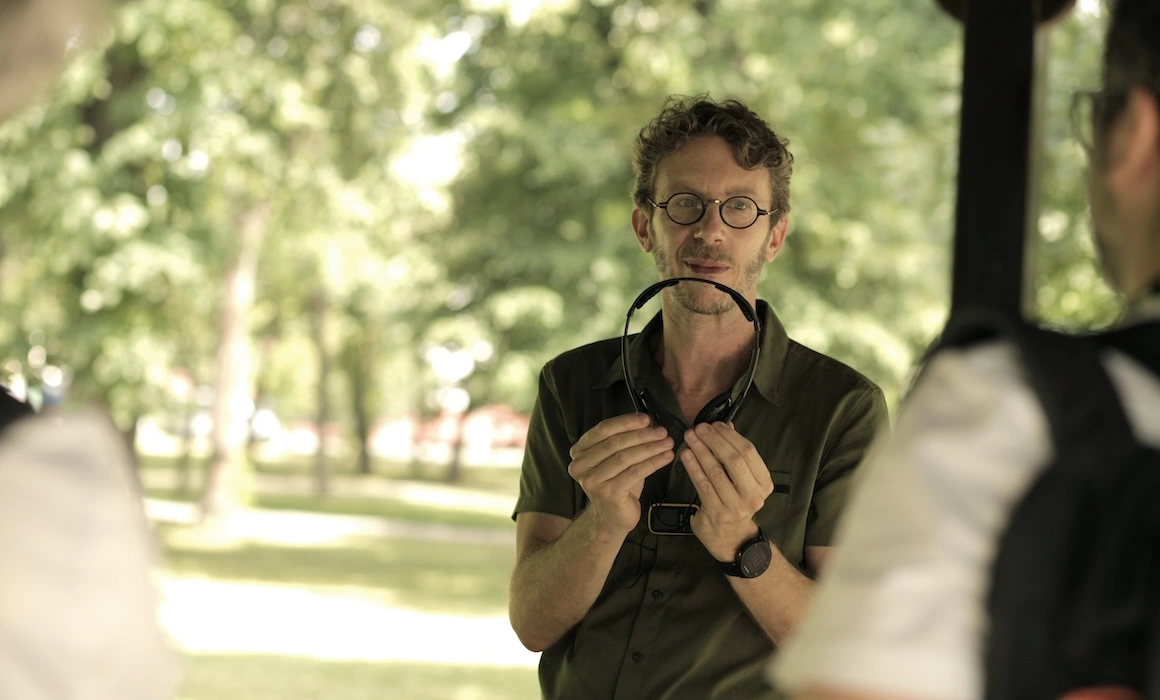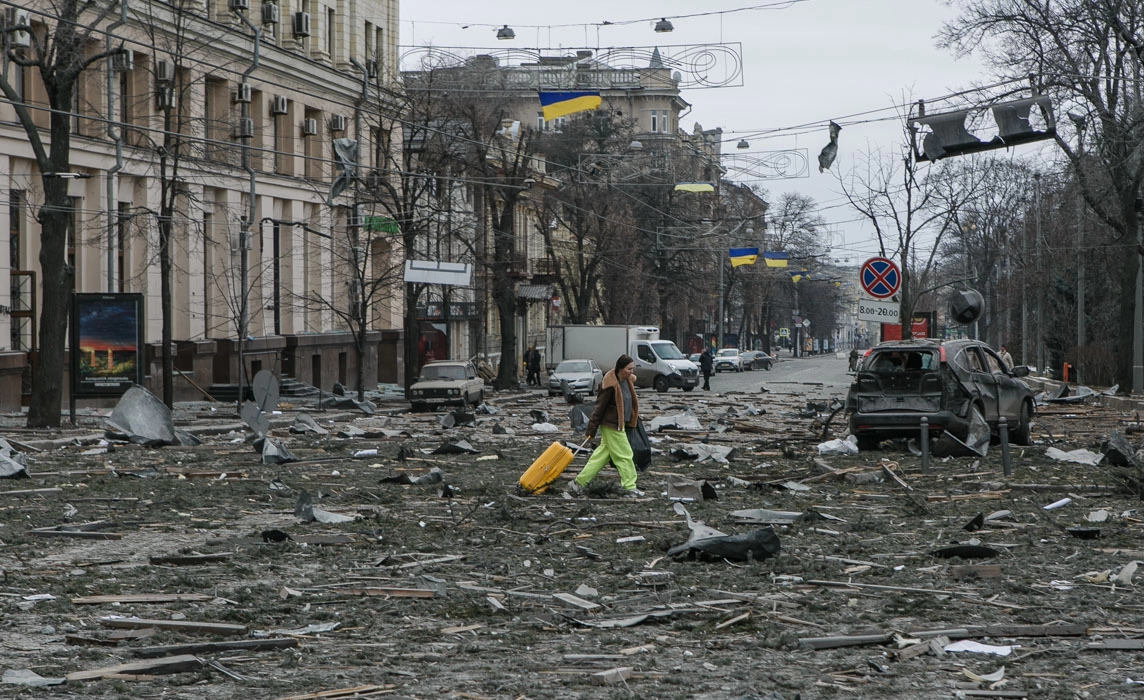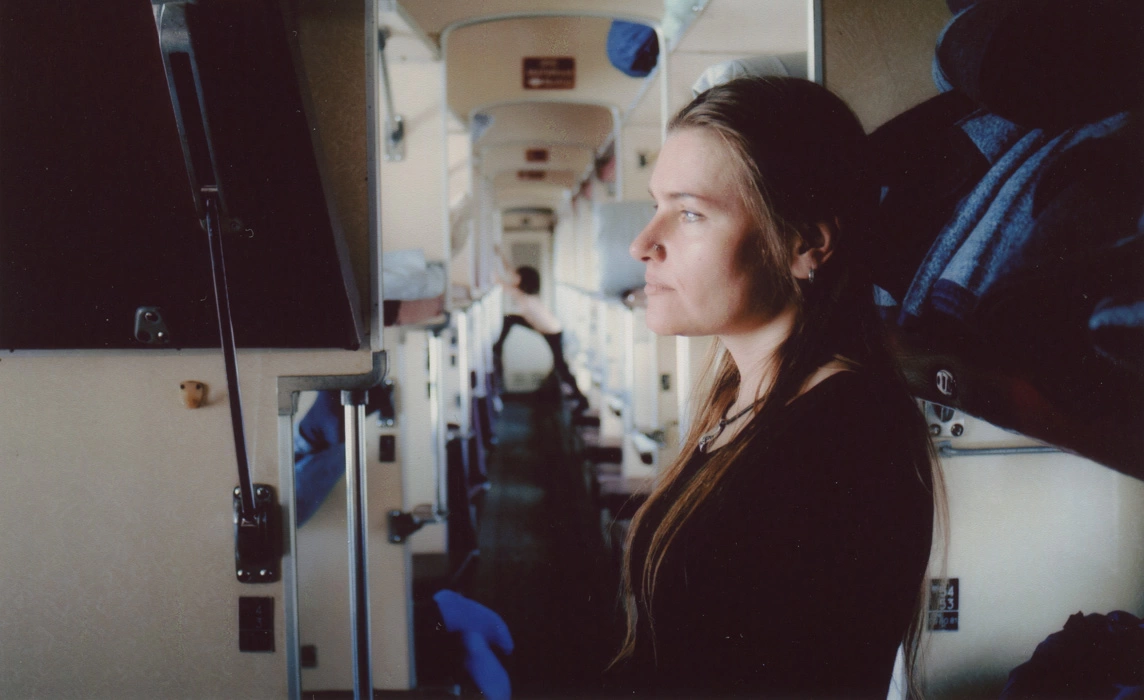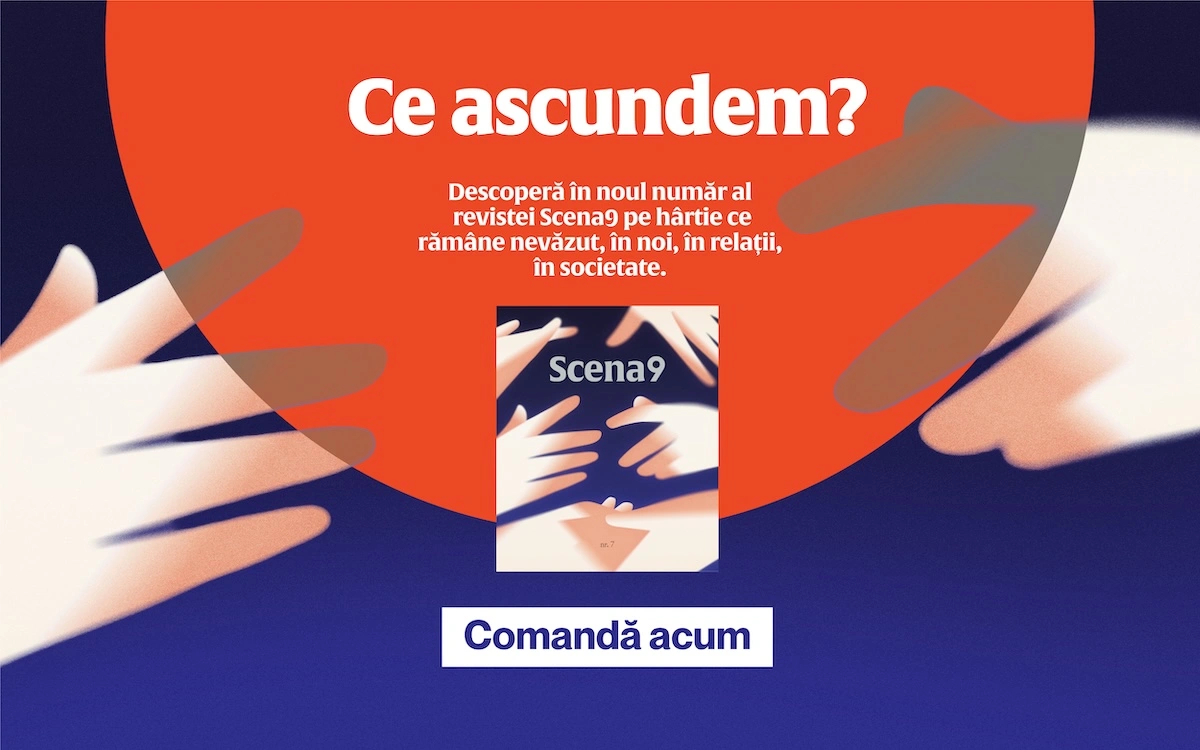During the hottest summer days of this summer in Bucharest, I took part in a sound art workshop organized by Semi Silent, sound art and field recording platform from Bucharest and hosted by the contemporary art space /SAC. There, I connected with a group of creative people and received a copious amount of lessons on sound. Our mentor, Stephane Marin, introduced us to the world of microphones and recording setups. Together we went on sound walks, we listened all of Cișmigiu Gardens’ corners and completely immersed in sound for 5 days.
Stephane Marin is a musical artist with an unconventional approach to sound. Known for his explorations of urban echoes and natural soundscapes, Marin combines classical recording techniques with new and unfamiliar perspectives, maintaining a constant curiosity about the interaction between natural and artificial sounds. Sound becomes a captivating experience, blurring the lines between the technical and the organic.
With his guidance, all the workshop participants produced a sound art piece from scratch, composed using our own recordings exclusively. Mine took form of a collection of sounds that are recognized as our “saviors” during cruel heatwave, feeling the need for an aimless riot against the insufferable high temperatures (listen here). The results will be exhibited during the sound creation and podcast festival Orizont Sonor, taking place in Constanța, between the 19th and 21st of September.
The workshop was organized as part of the fifth edition of Sonic Future Residencies, a project through which Anamaria Pravicencu, art director, aims at bringing us closer to the sounds that surround us.
I met Stephane for coffee on a scorching morning (35°C at 10AM!) just before the workshop's final day and we talked about field recording, non-discriminatory listening, sound naps, and phonosynthesis.
What was the thing that drew you to field recording? What inspired your passion for it?
It’s a long story. I’ve always been more of a listener than a viewer. I have some difficulty seeing things from a distance. So maybe that made me focus more on my listening. I listened to a lot of music but never had the chance to play it myself. I studied philosophy but didn’t want to be an academic or a historian of philosophy. So, I started searching for my own path and discovered electronic music in the late '90s.
At that time, I began working for the ”Lieux Publics” Center of Arts in Public Space, Marseille, focusing on contextual art shows and artistic devices, especially sound. Later, I joined a public art space company and started recording sounds for my compositions to emphasize the context where the performance takes place. It’s like I was making contexts of the context, a kind of redundancy or mise en abyme. I became interested in capturing the environment — the sounds around me — and realized that I was engaging in what is now called "field recording."
My real introduction to the field recording community came in 2012 when I moved to Singapore. I began sharing my work on Facebook and started connecting with people in the field recording world. It was a revelation, like discovering a new planet filled with people who shared my passion for recording the sounds of the world. They had been doing it longer than I had, and I learned a lot from them, which deepened my connection with this practice. It was like being an alien and finding a planet where people were already doing what I was doing, but they had been at it longer and had so much to teach me. That’s when I started exchanging ideas and communicating more with the field recording community.
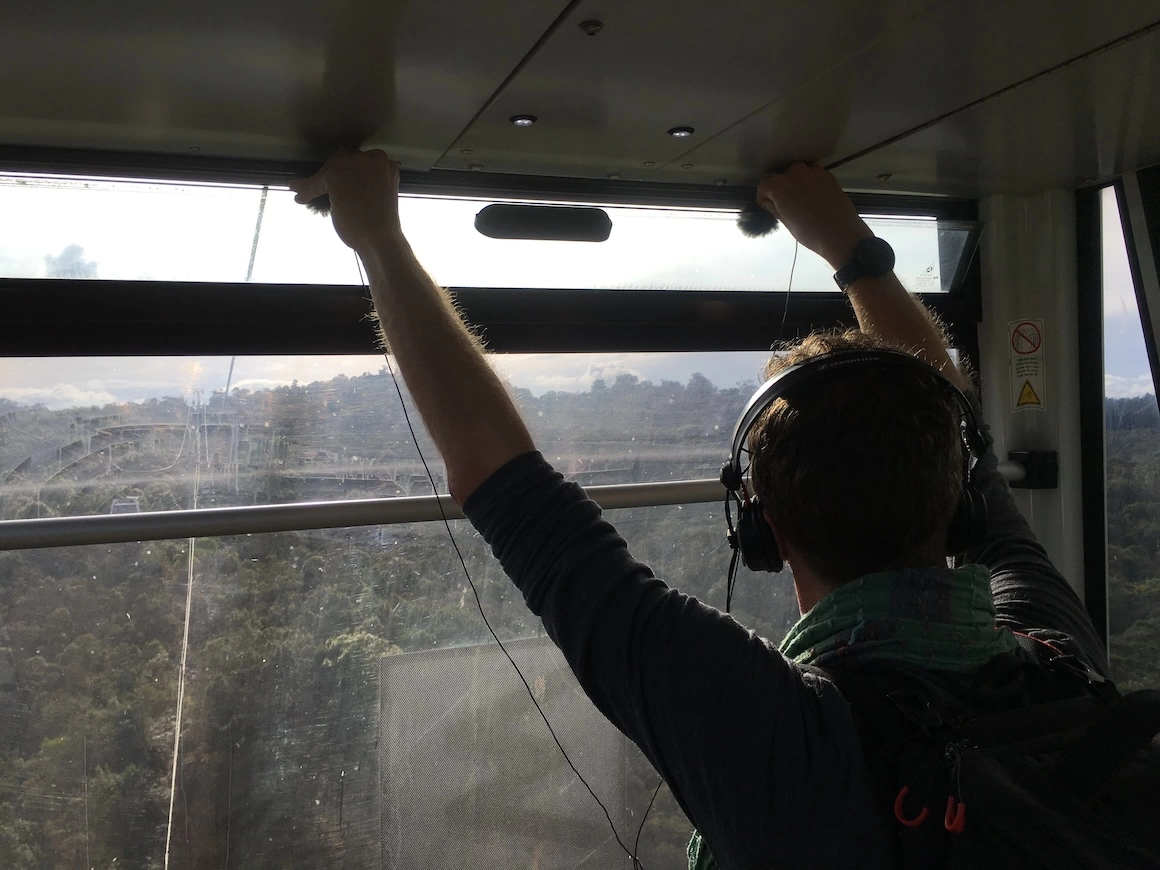
You mentioned in the first day of the workshop, that your general goal — maybe for you personally, or the projects you're involved in — is connected to art in public spaces. How does having art in public spaces make a difference?
For me, choosing to work in public spaces is a political choice. When I was composing electronic music in the beginning, I felt like I was only making music for a very specific crowd — partygoers, having fun late at night, meeting interesting people, but still kind of alienating. It felt like a bubble.
When I discovered art in public spaces, I realized I could do something similar — composing with my computer, using microphones — but for everyone, not just that niche group. For the little girl crossing the street, the man walking his dog, the elderly person. And this could happen in any country: Colombia, Singapore, Romania — it doesn’t matter, because sound and music transcend words. You can share them universally.
I see it as a social experience. It's connected to our bodies, to listening. Of course, how people experience sound depends on their cultural background, but I believe there’s something fundamental about being a listener in a physical space. It simplifies things for me.
Even though I’m not making overtly political art — I don’t usually tackle big issues head-on, like climate change, though I’ve started to engage with it indirectly — my choice to work in public spaces is political in itself. It’s about bringing art to everyone, not just a privileged or exclusive group. That’s why I see it as important.
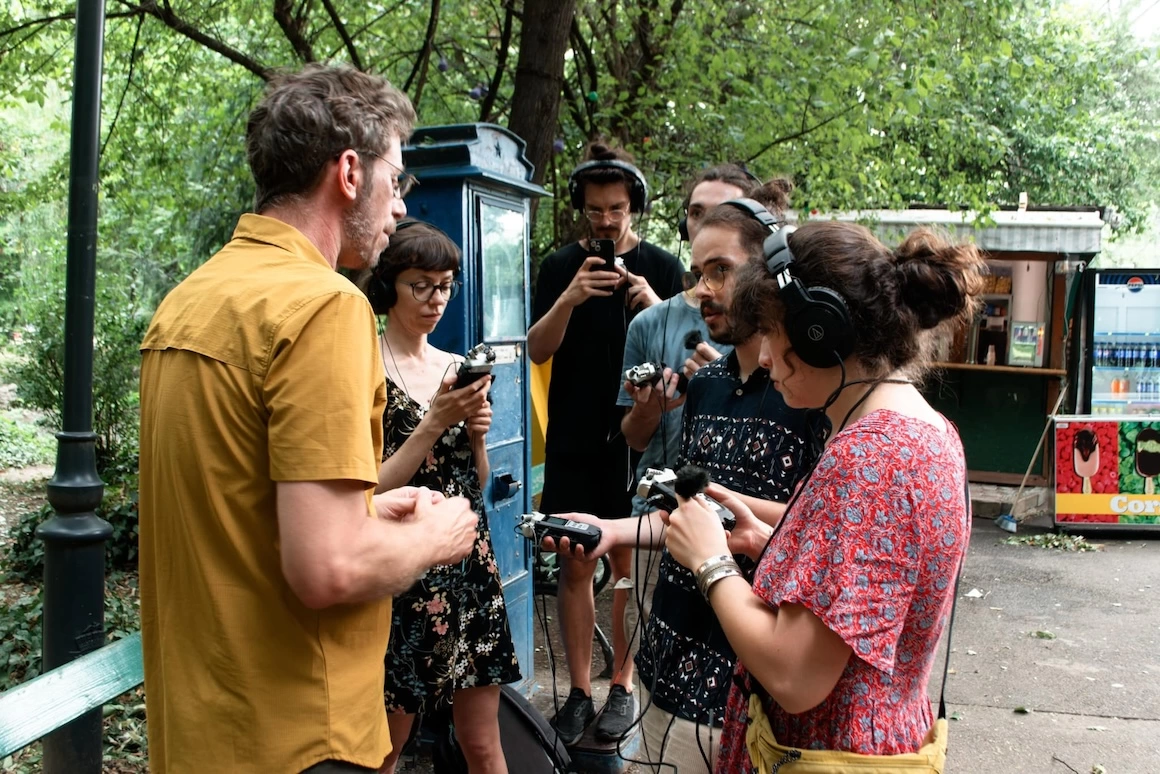
Twice during the workshop, we went to Cişmigiu Park to practice sound yoga followed by a sound walk. Could you explain these concepts more?
Sure. Let’s start with sound yoga, or as I like to call it, listening yoga. I think of it as a way to "cleanse" the ears. While I can't claim to have invented it — since people like Pauline Oliveros (1932-2016) were already doing deep listening exercises — I developed this on my own. I’d never participated in her workshops or read her work before creating my listening yoga practice. For me, it felt like a natural extension of my background in yoga and meditation, particularly vipassana. I wanted to apply that mindfulness to listening, to help people prepare to listen in a more focused way.
At first, I started doing these listening exercises spontaneously. I’d go out in my garden, close my eyes, and just listen. Then I started improvising instructions like, “Listen to the left, listen to the right, listen above.” It became an in-situ practice that evolved as I shared it with people, usually for around 5 to 15 minutes. I realized it was a great way to begin any sound-based artistic experience. It helps center people, gathering them together in the same headspace, especially if they've just rushed in from daily life.
In sound yoga, we connect through listening — like starting a meditation or yoga class. By aligning our listening, we might not hear the same thing, but we listen similarly, creating a shared mood or space.
As for the sound walk, I wanted to strip away the spectacle of typical performances, where the public watches a show. Instead, the performance is simply walking with headphones on, without adding anything to the public space. There’s no stage, no speakers, just headphones that transform the experience. It’s about manipulating time and space — moving between the here and now, the past, the future, or different locations — while always bringing you back to your current surroundings. It becomes a balance between shifting realities, like a trip that alters your perception naturally.
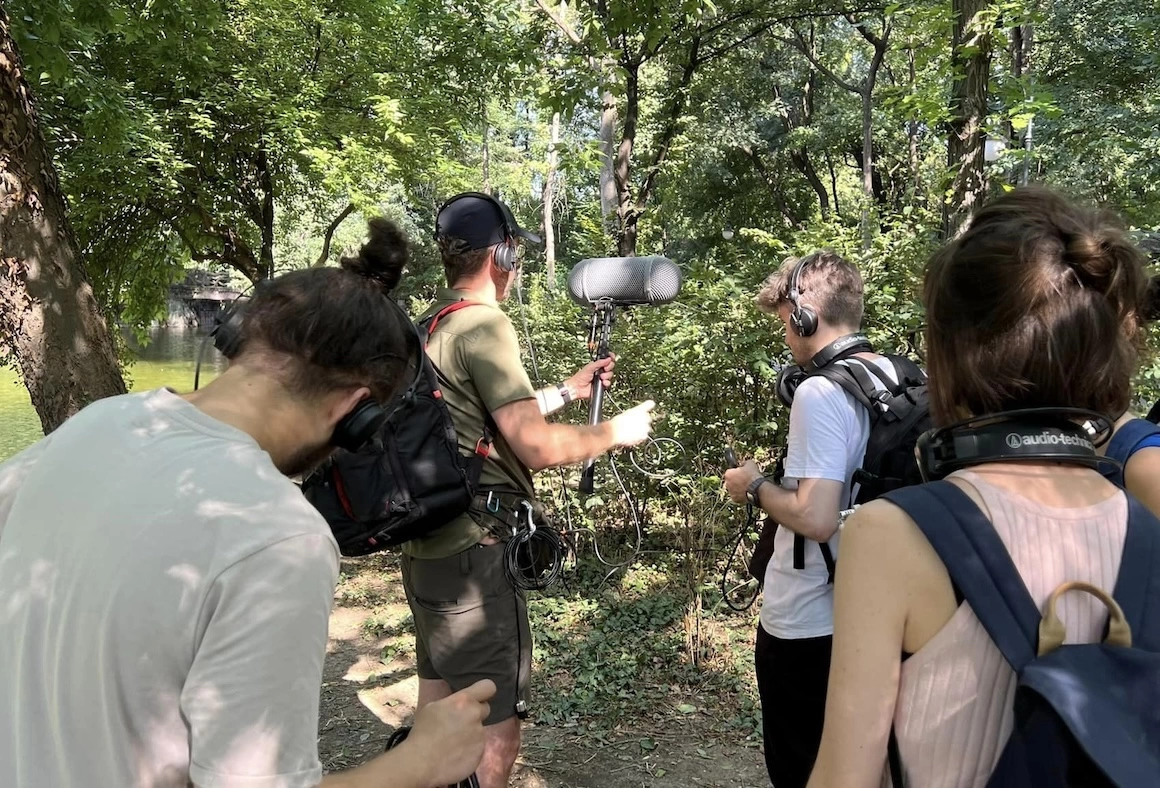
Both these experiences felt exactly as you described them. What about this sound nap practice I remember you telling us about?
The sound nap is much simpler. You put on noise-canceling headphones, get comfortable, close your eyes, and listen to a track. It’s more like a private listening session, where you're immersed in sound without external distractions. I can bring these devices anywhere, without needing external power, and set them up easily for people to experience. Though it’s not specifically about engaging with the environment like my other projects, the sound nap allows people to reflect on their surroundings through sound alone.
It’s amazing how sound can change your experience of reality. I remember one time when there was a fire installation in a park, with flames dancing everywhere. I was listening to my composition, which was about the four elements. The fire wasn’t part of the piece, but somehow, as I was listening to water sounds, it made the flames seem more fluid, almost like water. It’s fascinating how one element can amplify or shift the perception of another. That’s what these listening experiences offer — a chance to see the world in a new way, even if that’s not the main goal of the device.
Meditation through sound can become really reflective and meditative.
Yes, it can be meditative, but not always in the kind of quietness we expect it to be. For example, if you would play Tres Fronteras, you’ll notice it’s not so meditative. In my compositions, there's always something disruptive, something that scratches or creates discomfort. I like to play with the poetics of unease, what in French we call inquiétude, the state of not being at peace. From the start, if I offer you a moment of calm, rest assured, I will disrupt it in a few minutes. I enjoy the contrast between quietness and discomfort, maybe because that’s how I experience the world. It’s peaceful sometimes, but then suddenly, things happen — people, events, accidents. This is also how I see the world, how I perceive the environment, climate change, and our relationship with the non-human. Everything is intertwined.
I was impressed during our workshop discussion a few days ago. You talked about phonosynthesis. It’s rare to hear a field recording artist who embraces anthropogenic and technophonic (technophony=the overwhelming presence of electro-mechanical noise) sounds. Usually, as you mentioned, people are drawn to pristine, heavenly sounds, but few find the balance between human-made sounds and nature. You also said something profound — that there’s no such thing as bad humans and good nature; it’s always a mix, and we live in it. I’d love to hear more of your thoughts on this.
Yes, I think many field recording practices focus on different sonic worlds, such as biophony (natural sounds like animals, and insects), geophony (non-biological sounds like wind or water), and anthropophony (human-made sounds). These are not as well known because people today are often more focused on eco-acoustics and bio-acoustics, paying attention to natural sounds in response to the overwhelming presence of certain noises because they are completely bored of the city (see: 8 Hours of Rain Sound Relaxation / Rain in a Forest with a Gentle Stream). It’s a matter of ecology, and I fully understand this. However, in terms of acoustic ecology, or what we can call, following Roberto Barbanti an ”ecosophy of listening”, I approach it differently. I don't want to discriminate against any sound. To me, it feels almost like ostracism, excluding certain sounds just because they’re not "natural" or pleasing. We have to be more inclusive, this includes all the "-phonies”
I want to listen to everything, including sounds from those who are politically or ideologically different from me. My ears are always open to different perspectives. In theory, many people find all kinds of sounds interesting, but in reality, when people ask for a beautiful sound, they typically think of birdsong, water, or something like that.
But that’s too simplistic. Water could be a waterfall, which after a day near it, might hurt your ears as much as city traffic would. In the background, traffic can be as peaceful as a waterfall if you really listen. It’s about perspective. Living in the countryside, being woken by a rooster at 4 or 5 AM isn’t always pleasant, even though people think of roosters as "natural" sounds. So, it’s not always clear-cut, and we have to think and experiment with how we listen.
Pierre Schaeffer developed the idea of reduced listening, which doesn’t focus on the source of a sound but just listens to it as it exists in the air. For example, when you hear a bird, you’re not hearing the bird itself, but rather its sound, which also includes the context, the place. It’s a more complex experience.
The concept of phonosynthesis, for me, is where these three worlds of sound — biophony, geophony, and anthropophony — meet and blend. It’s not just a mix of sounds, but an idea that the listener can draw energy from these sounds, much like plants do from the sun. I see this synthesis of sounds as creating a kind of energy, transforming listening into a form of life-giving activity, vivifying and enhancing your awareness.
Noise pollution is a very touchy subject for me, as I recently had to move to a new home because the street noise was too overwhelming for me. Now I recommend everybody to move into new places with their ears as well.
Sure, I understand your issue so much. When it comes to where I live now in Toulouse, I did try to choose the place by listening, but things don’t always turn out the way you want them to. We moved to a new flat about two years ago, and initially, I thought it was quieter than the last one. The street seemed less busy with cars, and there is a small garden behind the building. However, I realized that the walls are thinner and more porous. I could hear my neighbors talking—not shouting, just regular conversations—and we now have neighbors upstairs, so I hear the constant boom boom of footsteps, which I didn’t have in the previous flat.
On top of that, for the past three years, there have been ongoing metro construction works on our street, which have altered the noise environment. The nearby street is now pedestrianized and, together with the metro construction traffic noise has shifted and increased. As a result, the tranquility I initially expected from the area has changed. When choosing a place, especially with a family, there are multiple factors to consider—space, a garden, budget—and if you don’t have endless resources, you can’t check all the boxes. So I’m adapting to these unexpected situations and dealing with them as they come.
And regarding noise pollution, do you think it’s possible to have a non-discriminative ear? I find it hard sometimes to achieve that balance, especially in noisy areas like this street here, Calea Victoriei. I try to listen openly, but sometimes I just want to put on some noise-cancelling headphones and block it all out.
Yes, I understand. In an artistic or exploratory context, it's easier to embrace a non-discriminative ear. John Cage famously said that if a sound bothers you, just listen to it and eventually it will change. This works in many cases: if you listen closely to a repetitive sound, like drilling, it might become more interesting. In day-to-day life, especially when the noise is constant, this philosophy becomes much harder to follow. If you have construction noise all day and night, it’s nearly impossible to simply accept it—it will drive you crazy for sure.
